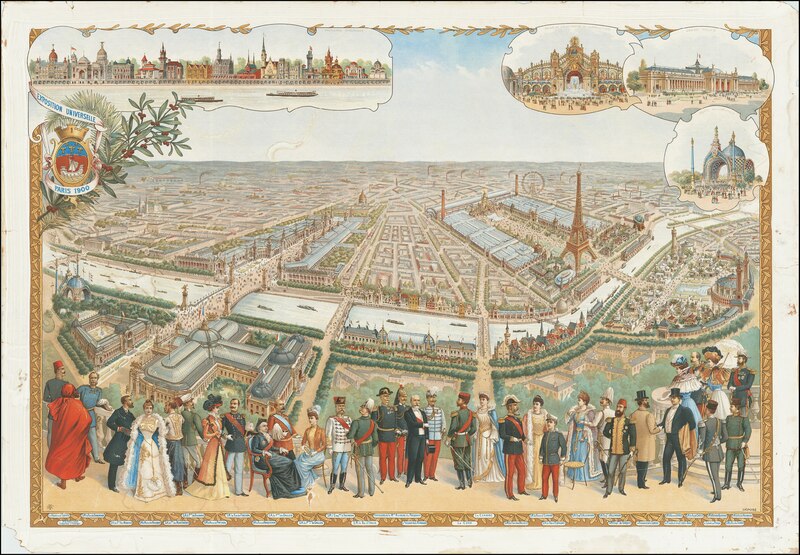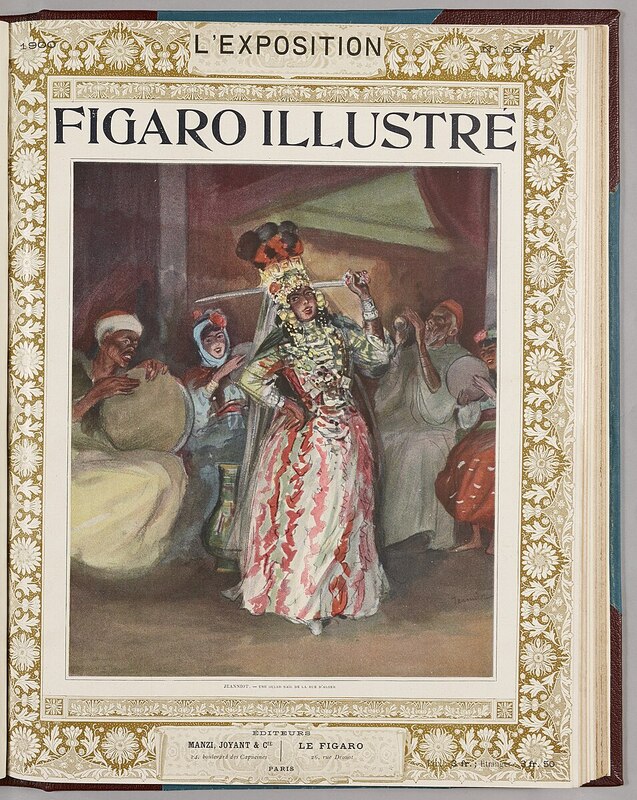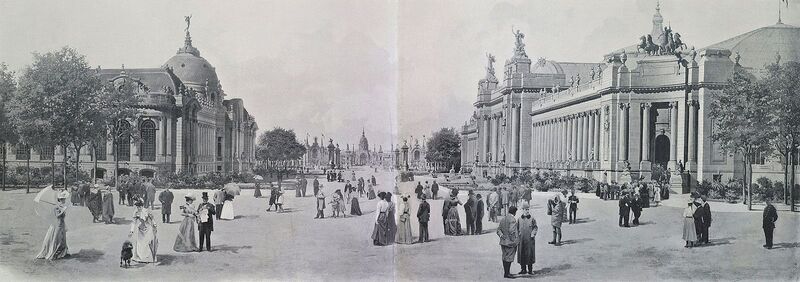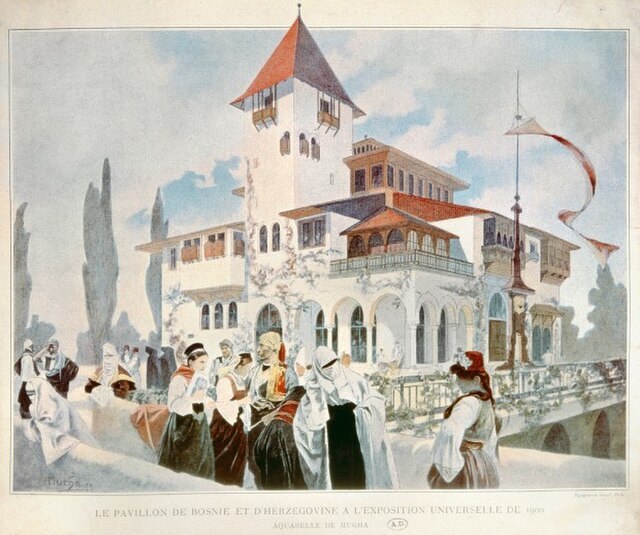The Paris Exposition of 1900
The Paris Exposition ran from April 15 to November 12th of 1900. This event exhibited a specific moment in history when countless individuals, art movements and cultures were brought together in the name of modernity. This intersection and diverse environment grounded in the celebration of the newness of innovation. The grounds spanned 112 hectares along the banks of the Seine and surrounding the Eiffel Tower. Paris transformed into a dazzling city which fully established itself as the “City of Lights’.
Art Nouveau had a special place in the Exposition Universelle of 1900 since the theme of the Exposition “A Retrospective of the Previous Century.” and thus the presence of Art Nouveau was shrouded in questions of its place in this event. Regardless, this widespread art style found its place in the Exposition, and while not the focal point, still defined the Exposition and was the pinnacle of the style itself. Art Nouveau architectural style and art was displayed on the broad walkway of the Esplanade des Invalides.



